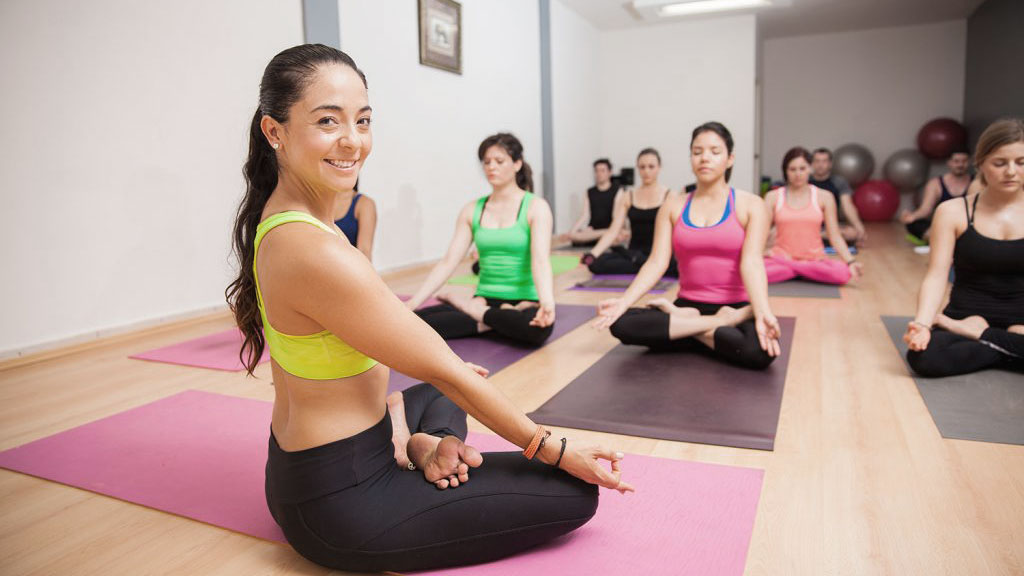Power of Positive Words and Joyful Healing
- November 10, 2018
- Posted by: admin
- Category: Featured Content,

By Nicole Yong
Sincerely, I am blessed and feel like I have won a grand bonanza when it comes to teaching yoga as a part-time job. For me, this is better than any ordinary job. Being able to spend energy on teaching yoga makes me feel complete. I love this job and the reasons are many. I want to share the joyful experiences I have in my classes. One important aspect of my teaching is to always maintain a positive mind and share the joy with my students.
The Goal of Yoga
If we read Patanjali’s Yoga Sutras, the goal of yoga is to achieve Moksha, or enlightenment. It’s also about attaining final liberation from the world of suffering. Yoga practices involve asanas, Pranayama and Meditation, among others. It helps to build ourselves and guide the society towards good practices. The practice of Karma Yoga with a sincere heart is to resolve our samskaras, release internal tensions and experience inner happiness. A systematic yoga sadhana practice improves health in our body and enhances our positive mindset. The yoga instructor who follows the yoga sadhana practices is in harmony with himself and the world, living positively in peace and love.
Our Positive Words are Our Most Powerful Tools
Through systematic yoga sadhana practices, our positive mind becomes stronger. We will have a good sense of humour and a strong sense of hope. We are full of bliss and ready to face daily life challenges. The power of our positive mind will lead to positive thoughts and positive words. They all add up and matter. Thus, words are more than just a way to communicate because words have energy, hold a vibration and have power. You may or may not be aware of people’s energy, but positive people with positive words are happy, compassionate and supportive. You feel happy and relaxed around them. Their vibe is very warm and strong. Positive words are our most powerful tools to create a relaxed, safe, encouraging, harmonious and happy learning environment.
The Yoga Instructor’s Positive Energy
The yoga instructor’s positive energy is important. The instructor needs to be calm, centred, loving, passionate and radiating joy when teaching. When any one of these essential components is missing, students might not enjoy the class no matter what level of technical expertise the instructor possesses. Again, the practice of pranayama and meditation is very important. I understand that my enthusiasm wouldn’t have lasted long in yoga practice and teaching if the inner joy of my personal practice was not felt and the interest in yoga was just at a physical level only.
Use Encouraging Language
Make it clear that, classroom is a no-pressure and judgment-free practice environment. This environment allows students to work at their own comfort and capacity.
The 1st rule is: No suffering.
Yoga pose is described in Patanjali’s Yoga Sutra as “Sthiram Sukham Asanam” (Asanam = yoga poses; Sukham = happy, calm; Sthiram = steady), which can mean
“yoga poses should be practiced in a way that is steady, but with a happy and calm mind”.
In other words, doing yoga poses in a gentle and graceful manner with awareness can create happiness, and simultaneously relax and rejuvenate you. So there is no one “strongest pose” in yoga. Different yoga poses have different benefits. Let the students know that clearly.
The 2nd rule is: No judgement.
When teaching open-level classes, we may have students who have been practising for more than five years, and students who are attending for the first time. As a caring yoga teacher, we need to tell students that their practice is their own, and everyone has his own practice journey. If students look at other students and see someone stretching deeper or stronger, they may say to themselves:
“My practice is not good enough. I’ll never get there.”
And so on. The comparisons they make will steal their joy away. Students will go through mental pain and break rule number one, which is: No suffering. So, the yoga instructor needs to tell students to practise with a happy mood, smiling face and no judgement of the practice.

You May Not Be a Great Instructor, But Be a Happy One
Sometimes I share with my class that I am just a normal yoga instructor. “Please lower any expectations of me, and then anything you enjoy or learn will be a bonus” is my personal mantra. I feel I’m still learning to guide students in the practices — and this positive mindset helps to settle my self-conscious thoughts. Yes, zero ego.
When I demonstrate intermediate or advance yoga poses, I joke that no matter how impressive a yoga pose looks, it’s just a tool for us to train ourselves physically and be mentally healthy, steady and calm. See…if you are able to perform a headstand perfectly, it won’t save someone from losing a job or being scolded by clients. So, don’t worry, be happy, smile always, don’t take ourselves too seriously, if we can’t perform headstand. Hehe, I am not an entertainer, but I realise that bringing happiness in the teaching creates a positive climate of learning. You may notice when an instructor has technical expertise versus when one who doesn’t, but often the quality of the class is not measured in such a way.
From my observation and experience, a great class is made of a happy instructor, happy vibrations and happy students.
The evidence comes after the class is over: I can see from the students’ reactions — their eyes are filled with joy and they are happy. Students sometimes share that they are happy, their week was different or they slept well. I still remember, last year, after my yoga class, one of my senior students approached me with a broad smile and said: “Teacher, I really enjoyed the meditation practice. I felt calm and light. It seemed like there was no weight, like being in space.”
Out of a sudden, another senior student replied happily:“Ha-ha, you can fly without AirAsia. You can save a lot of money.” The rest of the students were as confused as me but just for a while. But when we understood the joke, there was a loud laughter throughout the class. Everyone laughed out loud. A healthy sense of humour was already blossoming and spreading among the students.
Positive Energy and Intuition
No matter where I teach, whom I teach, the thought of how to help the students is always foremost in my mind. Sometimes the teaching plan needs to be changed to adapt to the students’ conditions. It comes from intuition and I conduct the class according to the flow of the day.
This is why I love teaching yoga. Teaching yoga is an art and also a science. It continuously inspires me to make each and every class a happy one.
The Universe is full of vibrations, whether seen or unseen, it will definitely vibrate. Each of our thought creates a vibration, which appears like a wave in our mind and that vibration travels outwards into the universe. Positive vibration created from the mind will attract similar vibrations from the universe, and manifest as circumstances in life.
Therefore, as yoga instructors, we digest the yoga philosophies and wisdom that we learn in the yoga instructor courses and make it workable in our own life. An example, or experience, in life is much better than tonnes of theories and hundreds of workshops. Let students see the Yoga in us. Let us glow with the yogic light positively. Keep up that light.
Om Namah Shivaya.
